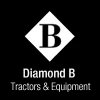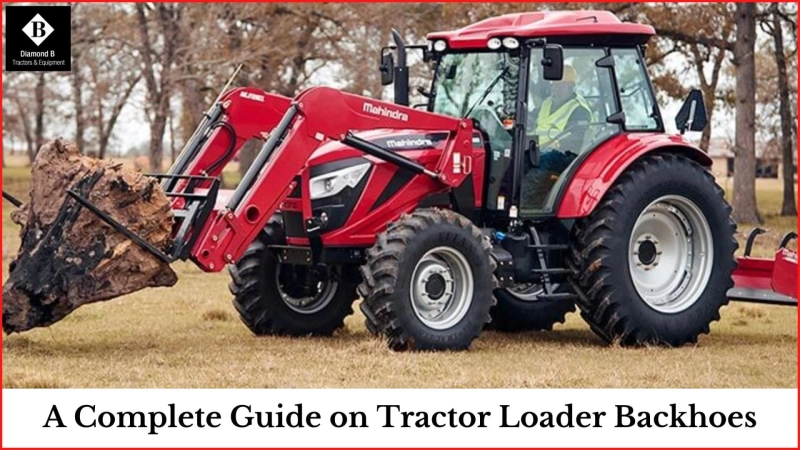A tractor loader backhoe, also called a TLB, is a heavy equipment vehicle that consists of a tractor, a loader, and a backhoe in one unit. This machine is versatile and can be used for various construction and landscaping tasks, such as digging, trenching, and backfilling.
The tractor part of the TLB provides power and stability, while the loader and backhoe are used for digging and other tasks. For example, the loader can scoop up materials, such as dirt and gravel, and deposit them into a dump truck or other container. The backhoe can be used for excavating and trenching.
TLBs are available in various sizes and configurations to suit the needs of different job sites. For example, smaller TLBs are typically used for residential construction projects, while larger models are more suited for commercial or industrial applications.
When choosing a TLB, there are several things to consider, such as a small tractor for sale in Texas, the job site, and the needed attachments. This post will take a closer look at each factor to help you choose the right TLB for your needs.
What is Your Purpose? Is it a Small or Hobby Farm, a Commercial Business, or a Large Farm?
A backhoe loader is very important and versatile equipment in the agricultural, residential, construction, and industrial sectors. It's a tractor with a big front-end bucket that can push, scoop, and level things and carry heavy loads. The bucket at the rear end is designed for digging and may be used to dig, clean out debris, and retrieve objects.
You may buy an industrial tractor with a loader and backhoe permanently attached from tractor dealers in Texas. Still, we don't recommend it unless you need to do just one type of task, such as construction excavation. For versatility, most people require detachable tools.
Some firms need a tractor for a single function. Cities and towns, for example, acquire massive heavy tractor loader backhoes with rubber tires and the ability to put trash in a dump truck. One piece of equipment can accomplish the job of several men and machines.
Before you make your decision, consider everything you might want to achieve with your tractor. Will this equipment be required to grade, dig, plow, mow, cultivate the land, water plants, and transport hay or snow...? If you answered yes to any of these, you need a versatile machine to do it all.
What Are Tractor Backhoes Used For?
Tractors with backhoe and loader attachments are ideal for medium-sized projects because they are powerful enough to complete the task and smaller than industrial versions. In addition, they provide a unique allure because they are fast enough to travel the roads to a work location – no need for a trailer for little journeys required for larger construction projects.
You can use a tractor loader backhoe for the following tasks:
Construction sites: Tractor Loader Backhoe is an excellent tool for construction sites as they help in various tasks such as digging trenches, holes for poles, and excavating areas.Landscaping: Landscapers must perform excavation regularly. They may dig and pile dirt to create exciting levels, fill low-lying areas or dig ponds, remove tree stumps, or spread gravel on pathways or driveways. You can use a tractor with a backhoe and loader to do all these tasks quickly.Farms: Farms usually need a tractor for plowing fields, pulling equipment, and transporting hay bales or other materials. A tractor with a backhoe can also be used to dig trenches for irrigation lines or to remove tree stumps.Specs for the Digging Backhoe
Indeed, horsepower isn't everything. It's essential, but you must also ensure the appropriate backhoe for the task.
Digging depth: The first spec to look for is the digging depth. It would help if you had a backhoe that could dig as deep as needed. Most backhoes can dig between 8 and 10 feet. Some may be able to dig even deeper, but they are less common.The width of the front-loader bucket: The width of the bucket is significant for two reasons. First, a wider bucket can carry more material, which is essential if you fill a dump truck or dig a ditch many feet wide. Second, a wider bucket can also level more material at once, which helps grade a driveway or level a construction site. The width is between 48 and 96 inches, and it can carry loads of 600 to 2,100 pounds.Rear Bucket Width: Most 12-inch-wide buckets have 2.5 cubic feet of volume and can carry 250 pounds of material. Larger, 60-inch-wide buckets can carry four times as much. Consider a backhoe with a giant rear bucket if you want to dig a hole or trench quickly.Lifting Capability: The amount of material they can carry and the breadth of the front and rear buckets is critical to overall productivity. When determining the appropriate equipment, knowing what you'll be transporting ahead of time is essential. Operating Weight: The operating weight of the backhoe is something you must consider before making your purchase. The heavier the backhoe, the more challenging it will operate, and the more damage it will do to soft ground. Conversely, a backhoe that's too light won't be as productive.Read here to know to buy a tractor from an authorized dealer.
In Conclusion
A tractor loader backhoe (TLB) is a versatile machine used for various tasks on construction sites, farms, and landscaping projects. When choosing a TLB, consider the important specs for your project, such as digging depth, bucket width, lifting capability, and operating weight. With some analysis, you can find the perfect TLB for your needs. Mahindra tractor dealers will help you understand which models best suit your requirements. So, go ahead and add a TLB to your fleet today!


